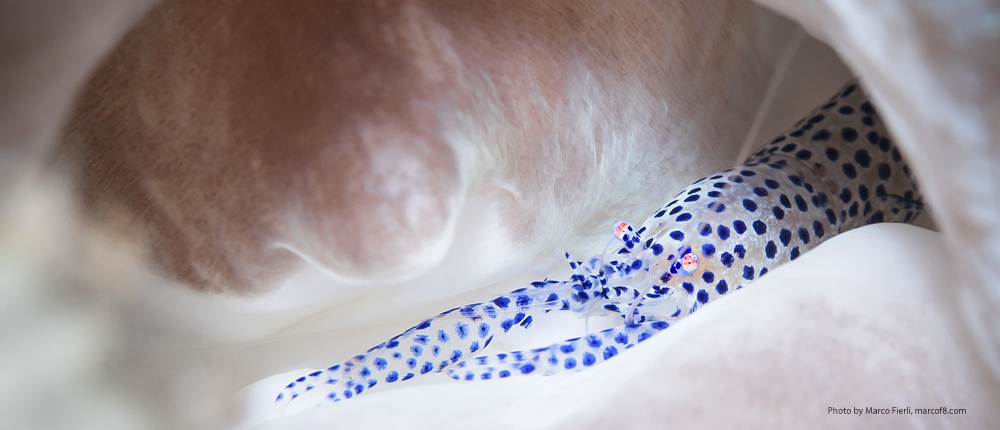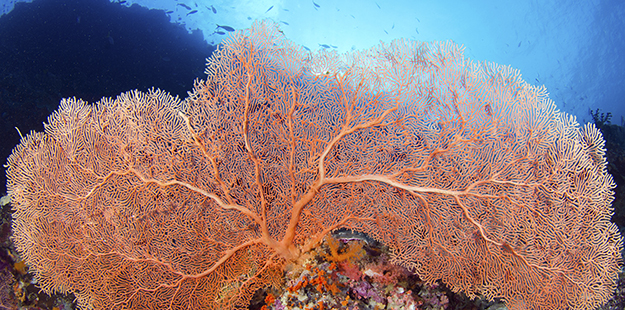Small Treasures
Discovering a wealth of rare and elusive marine species at Wakatobi
There are thousands of unique creatures to be discovered on the reefs of Wakatobi, including some rare specimens that even veteran marine-life scientists are excited to find. This was the case for Dr. Richard Smith, who once spent years traveling and diving across wide areas of the Indian and Pacific Oceans in search of a tiny variety of shrimp that lives deep inside the gills of the giant Tridacna clam. His search finally ended at Wakatobi, when he found not one but two of these elusive shrimp inhabiting a giant clam.
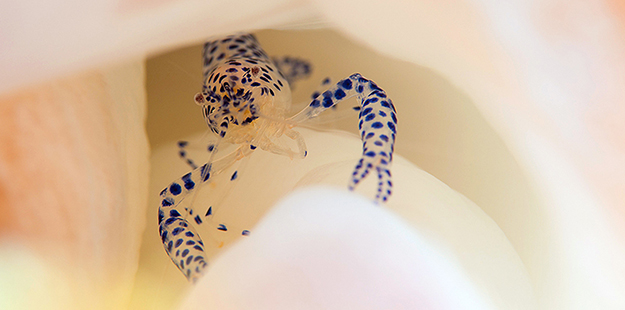
The Giant Clam shrimp is considered a rare find and can be an exciting discovery for photographers. Photo by Richard Smith
These clams can grow to sizes of more than 120 cm/ 14 inches, weight up to 200 kg / 440 pounds, and live for more than 100 years. Once fairly common on reefs throughout the region, they are now endangered, and continue to thrive mostly in protected areas such as Wakatobi’s marine preserve. And it was at Wakatobi that Richard finally located these elusive shrimp, and documented this find. The images he captured showcase the elegance of this tiny animal, which displays deep indigo blue markings on a translucent body.
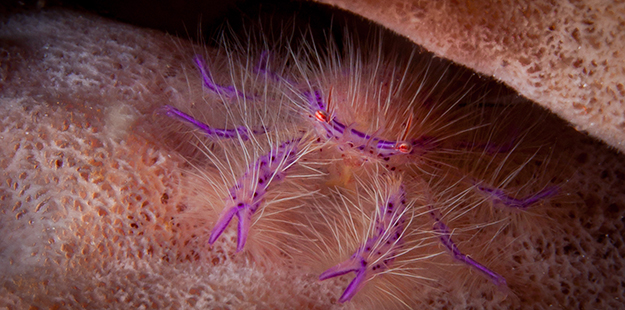
The squat lobster is no bigger than a human thumbnail and can be found living amongst the tentacles of crinoids all around Wakatobi’s reefs. Photo by Steve Miller
The giant clam shrimp is just one of many examples of the density and diversity of species that can be found at Wakatobi, Richard says. “Every animal seems to have another animal that lives on it, which is one of the things that makes diving and snorkeling in Wakatobi so rewarding,” he says. “Just take a closer look at a colorful crinoid perched atop some hard corals on a Wakatobi reef, and you might discover something amazing.” Tucked in among the tentacles of these living fossils are tiny finds such as the delicate and colorful squat lobster, which is no bigger than a human thumbnail.
A seahorse haven
The species-rich waters of Wakatobi proved to be a highly productive environment for Richard’s fieldwork on small marine life. Over the years, he has visited the resort numerous times, and once spent several months diving the reefs while conducting research for his PhD on the biology and conservation of pygmy seahorses. He still considers the pygmies to be some of his most precious subjects, both photographically and in the realm of his studies. These tiny animals, most of which live exclusively on a certain type of gorgonian sea fans, were not known to science until 1969.

The Denise’s pygmy seahorse, seen here, was first found and identified at Wakatobi in 2003 by Denise Tackett. Photo by Richard Smith
This first species to be discovered, the Hippocampus bargibanti, was named in honor of its finder, George Bargibant. It would take another 30 years before more species of pygmies were identified, including the Denise’s pygmy seahorse, which was first found and identified at Wakatobi in 2003 by Denise Tackett.
“Six of the seven known species of pygmy seahorses that have been discovered since 2003 reside in the Indo Pacific,” Richard says, “and Wakatobi is one of the best places in the world to find them. This is why I have long favored the area for conducting my research, and it’s exciting to think that there may be more unknown varieties out there awaiting discovery.”
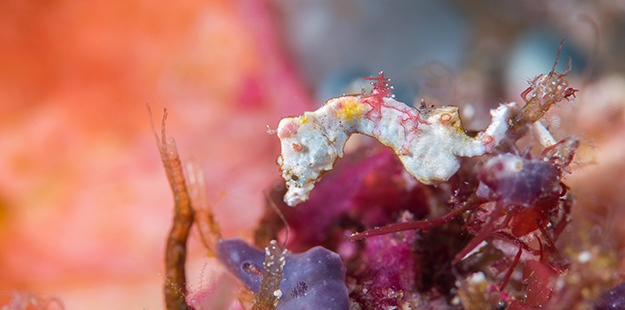
Pontoh’s pygmy seahorses are found around Wakatobi, but unlike Bargibant’s and Denise’s pygmies, they do not live in association with gorgonian sea fans. Photo by Richard Smith
Horses on the house
One of the colonies of Denise’s pygmy seahorses Richard studied were found on a gorgonian on Wakatobi’s House Reef. During his most recent trip to the resort, he was able to visit that same gorgonian he had first studied some six years earlier. Because pygmies only live for a year or so, Richard knew he wouldn’t find the same individuals, but he wanted to see if a new group had settled there. Sure enough, four new pygmies had taken up residence.
“What really made an impression wasn’t just the pygmies,” he says, “but how little the gorgonian had grown in the intervening six years–it was probably ten centimeters larger in span.” This served as reminder that some of the big gorgonians at Wakatobi can be many decades old, and reinforces the need for protection.


